Accessibility Resources
YCCD is committed to achieving Unsurpassed Excellence and Diversity at All Levels. A key aspect of this commitment is ensuring that our programs, services and online offerings are accessible. This page provides resources and information to the YCCD community informing them of YCCD’s efforts to transition its electronic resources to more accessible formats/options that is being led by Information Technologies.
How Do I Get Started?
The District has identified or will identify web content editors for each major area of the website. Content editors are asked to complete online training to learn the basics of accessibility so they can ensure YCCD achieves its goal of bringing our website in compliance with requirements of Section 504 of the Rehabilitation Act of 1973 and Title III of the Americans With Disabilities Act of 1990. In addition to this training, content editors are expected to review regular reports of accessibility issues on their respective web pages and to work to correct those errors. Information Technologies has developed a Website Style Guide and WordPress How-Tos, along with resources in this section, to enable content editors to complete these tasks. Content editors will be given access to reports on their respective sections of the website as well as additional training and information.
Where Can I Get Help?
In addition to the resources available on this website, the following additional resources are available to assist you.
- YCCD Webmaster (webmaster@yccd.edu)
https://webaim.org/standards/508/checklist is a concise list of standards derived from the Section 508 of the Rehabilitation Act, §1194.22 designed for content administrators via easy to understand and implement via pass/fail testing of HTML code. This checklist is directly based on http://www.section508.gov/. YCCD uses this checklist in guiding our 508 compliance efforts.
Checking Accessibility on Your Website
YCCD IT uses SiteImprove to run regular reports for content editors on the accessibility of web content. There are a number of free alternatives for checking the accessibility of webpages. A few tools include:
- SiteImprove free extension for Google Chrome
- Web Accessibility Evaluation Tool free and offered by Web AIM
Creating Accessible Content
Below are some resources and suggestions for how to create accessible content. The College is working to develop additional training workshops and opportunities for faculty, staff and students, and will provide information on those options as they become available.
Documents
YCCD recommends that wherever possible, content editors refrain from posting information on the website in document form and instead post it via HTML using the WordPress content editing system. If you need to post an extremely long document, or if you need to post more complex information, please use the resources below to ensure your document is accessible. The preferred format for posting documents is Adobe Acrobat PDF.
- For advice on creating accessible documents, visit the University of Washington’s page on Creating Accessible Documents. In addition to suggestions for how to create different types of accessible documents, the site includes a basic overview of what’s required when creating them.
- Outside services: There are two main services for converting documents to accessible versions. Accessibil-iT charges roughly $80/hour for conversion of PDF files but does offer same day or next day service in many cases. 247AccessibleDocuments.com offers tiered pricing based on the type of source document. For converting a PDF to an accessible PDF, the cost is $10/page.
Images
Generally speaking, if a webpage includes images, the content of those images is inaccessible to people who are blind or visually impaired. Whether and how to address these issues, depends largely on the purpose of the image within the context of the page. Information Technologies has developed at Alt Decision Tree and Alternative Text Guide to help you determine whether and how to include alt tags with your images.
Videos
To ensure your video content is accessible, you should plan to include captions, which are text versions of the audio content that is synchronized with the video. The District maintains a .edu video channel in YouTube. Generally, YouTube provides auto-captioning of short videos. However, this still requires some manual manipulation on your part to adjust the captions and correct errors. Longer videos will require the assistance from an outside captioning service at an additional cost unless you plan to caption the video within YouTube yourself.
- Rev.com provides video captioning services beginning at $1/minute.
